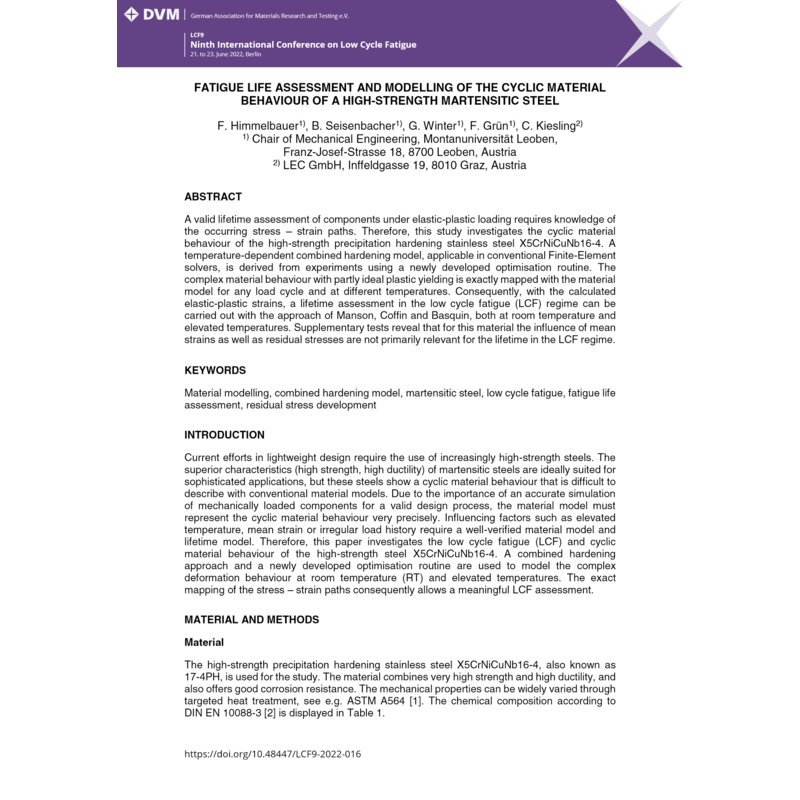- Online only



Current efforts in lightweight design require the use of increasingly high strength steels. The superior characteristics (high strength and high ductility) of martensitic steels are ideally suited for sophisticated applications, but these steels show a cyclic material behaviour that is difficult to describe with conventional material models. Due to the importance of an accurate simulation of mechanically loaded components for a valid design process, the material model must represent the cyclic material behaviour very precisely. Influencing factors such as residual stresses, elevated temperature, mean strain or irregular load history require a well-verified cyclic material model and lifetime model.
Conventional LCF tests with a martensitic steel (X5CrNiCuNb16-4) are carried…

Datenschutzbedingungen (bearbeiten im Modul "Kundenvorteile")

Lieferbedingungen (bearbeiten im Modul "Kundenvorteile")

Rücksendebedingungen (bearbeiten im Modul "Kundenvorteile")
Current efforts in lightweight design require the use of increasingly high strength steels. The superior characteristics (high strength and high ductility) of martensitic steels are ideally suited for sophisticated applications, but these steels show a cyclic material behaviour that is difficult to describe with conventional material models. Due to the importance of an accurate simulation of mechanically loaded components for a valid design process, the material model must represent the cyclic material behaviour very precisely. Influencing factors such as residual stresses, elevated temperature, mean strain or irregular load history require a well-verified cyclic material model and lifetime model.
Conventional LCF tests with a martensitic steel (X5CrNiCuNb16-4) are carried out at room temperature and 350 °C. Tests with a strain ratio of Rε=-1 and Rε=0 are conducted to study the influence of mean strain. Additionally, load collectives and the influence of the starting direction are investigated. The considered precipitation hardening stainless steel shows at room temperature an almost ideal plastic behaviour in the first load cycle, but the stress-strain-relationship changes drastically when the load is reversed. Based on these testing results, firstly, appropriate material model parameters, which can be used in conventional Finite-Element-solvers, are derived using a newly developed optimization routine. This optimization routine automatically determines the kinematic and isotropic parameters for a combined hardening model from the hysteresis of the LCF tests. In a further step, suitable lifetime models will be presented, which can be divided into empirical approaches like damage parameters, continuum-mechanics or fracture mechanical methods. With different methods, a lifetime calculation is executed and an assessment for suitable models is given.
Precise knowledge of the existing residual stresses is essential for a valid fatigue life assessment. Since a previous plastic deformation can lead to a rearrangement of the residual stresses, their development during cyclic deformations has been studied. Conventional HCF tests are carried out, whereby some specimens are subjected to an additional plastic preload. Residual stress measurements are carried out before and after the preload, as well as during the HCF tests. The development of residual stresses, the effect on the fatigue life as well as the consideration in the fatigue life assessment are shown.